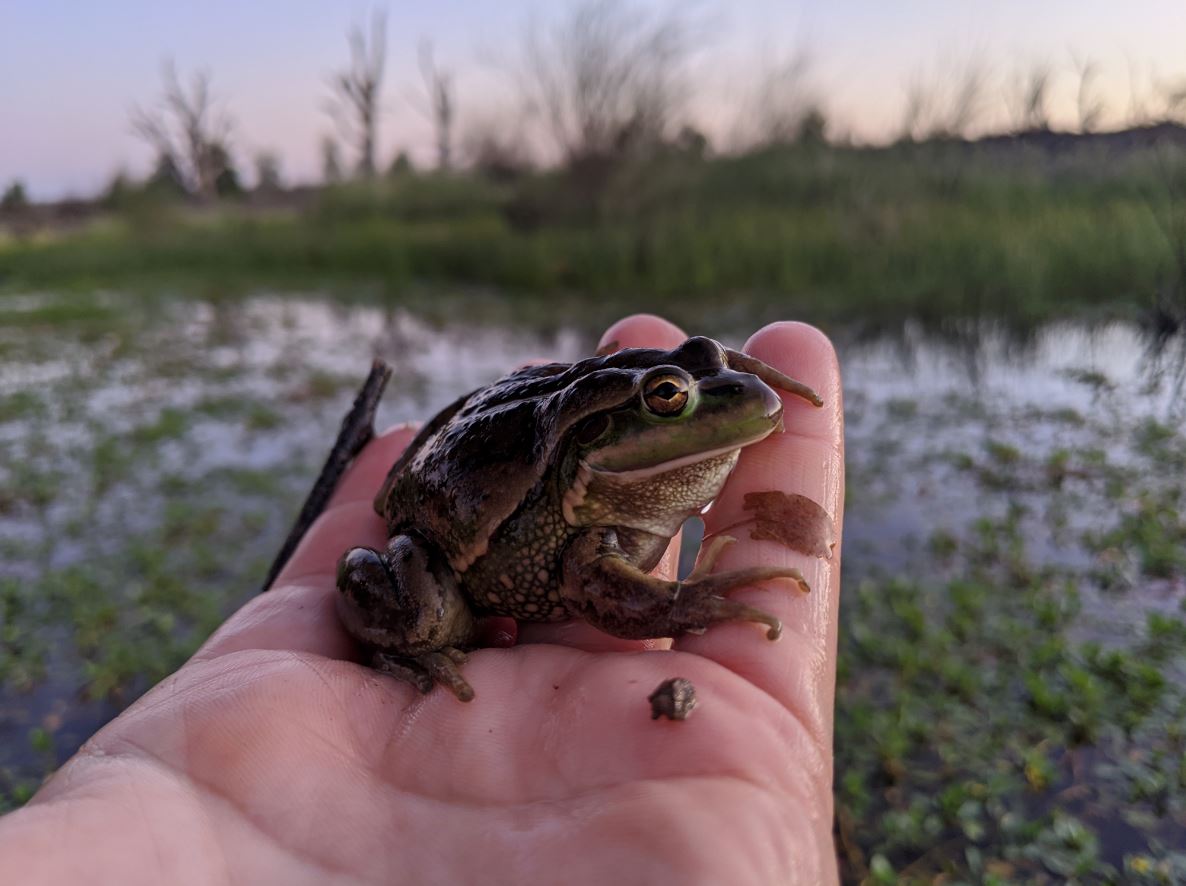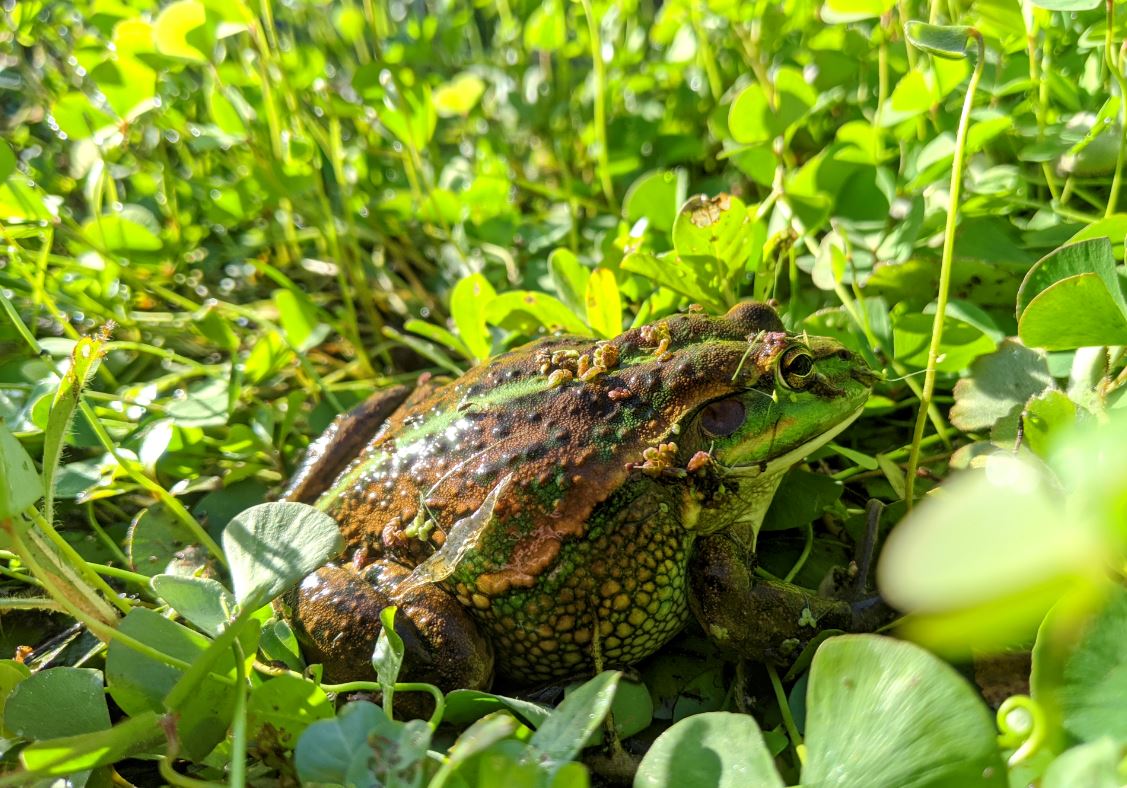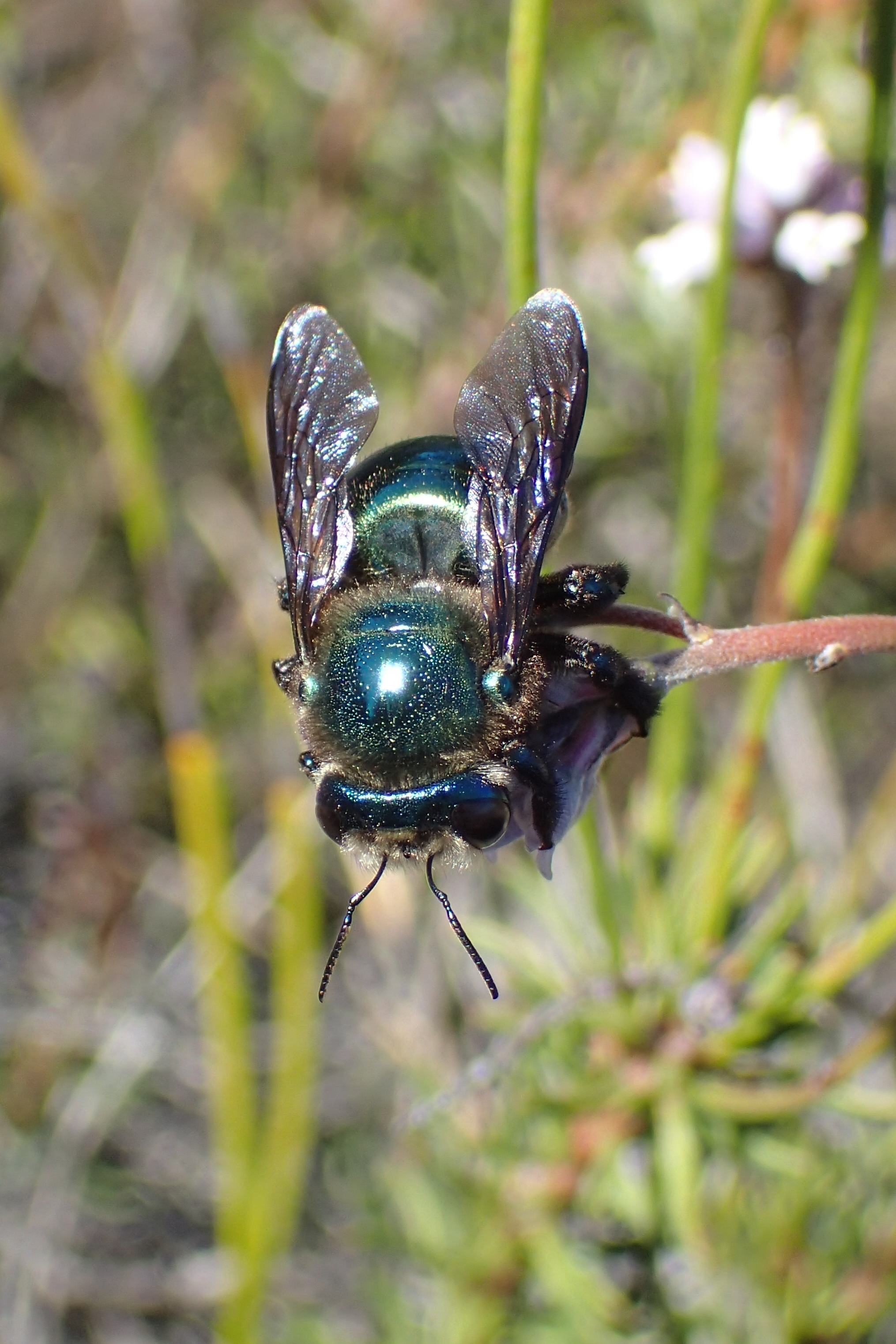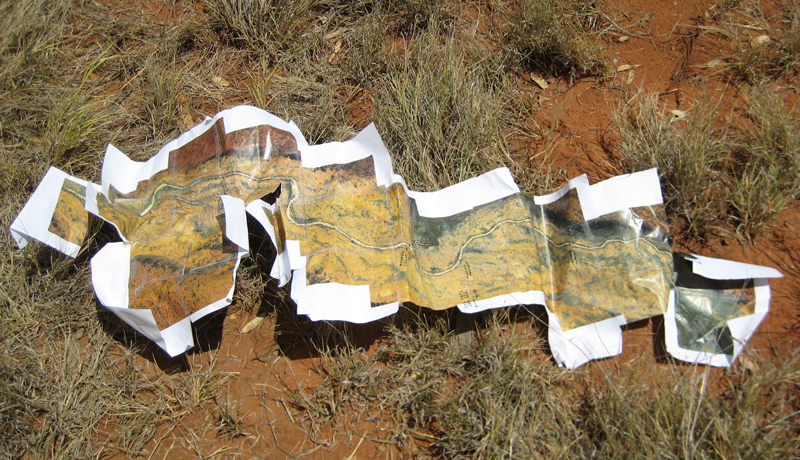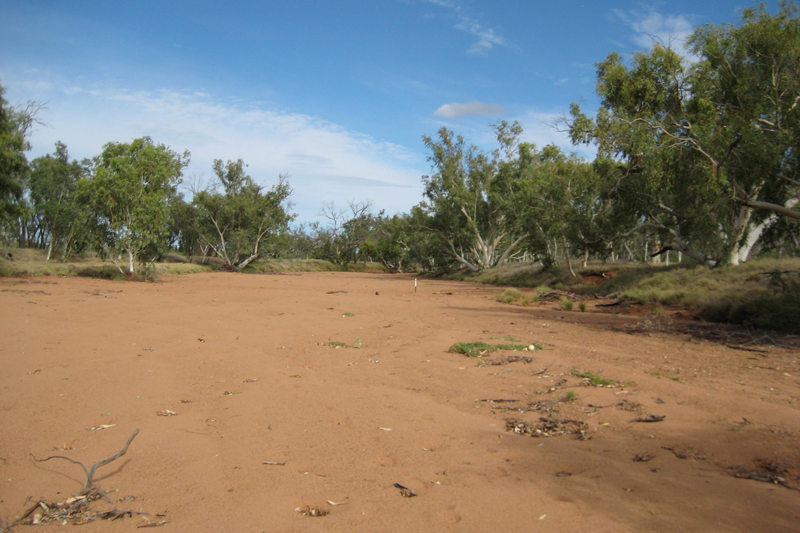New technologies, methods to combat wildlife trafficking
Simin Maleknia is one of Australia’s foremost experts on utilising odour detection methods and technologies to seek out criminal wildlife trafficking – and she can use those same technologies to return rescued wildlife to their correct regions. She is also an advocate for the ‘right kinds’ of wildlife tourism, for this industry is increasingly becoming recognised as an effective way to better protect wildlife in natural habitats. Recent prosecutions show that, properly designed and resourced, wildlife tourism can help to both detect and deter the illegal trafficking of collectible spec ies. In this report, first published in our partner magazine Wildlife Australia, Autumn 2020 edition, Simin Maleknia explains the role wildlife tourism, matched with detection and tracing techniques and technologies, is playing in stamping out this abhorrent trade that is pushing some endangered species to the brink.
WILDLIFE TOURISM is now a major global industry, continuing to grow as it nurtures people’s curiosity for exploring uncharted territories to observe animals in natural habitats.
With considerable effort by major national organisations in recent decades, the wildlife tourism industry is also aiming to protect the wildlife, by directing the public to observations of animals in national parks and wildlife sanctuaries, which protect these precious animals from illegal poaching, pet trading, and other activities that hurt or stress them.
Such ‘stressful’ activities can include elephant rides, swimming with dolphins, and posing for pictures with tigers or koalas.
These efforts have also led to major conservation programs across the globe, as a healthy wildlife population is essential for worldwide biodiversity preservation and environmental balance, as well as for economic growth by way of tourism.
Nonetheless, there still remains a profitable market for illegal wildlife trade – one of the biggest threats to endangered species.
The illegal wildlife trade is a multi-billion dollar criminal enterprise. It is a growing worldwide problem and sits among the fourth largest transnational crimes, according to the 2013 report of the International Fund for Animal Welfare (IFAW). 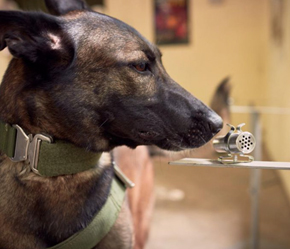
Public awareness is a key defence
To combat the illegal wildlife trade, it is vital to increase public awareness through various educational programs, as well as to improve on non-invasive methods that rapidly detect and identify illegal wildlife in transport.
Once confiscated, those same technologies can be used to further distinguish the geographical origins of wildlife for safe return to their natural habitats.
There have been advancements in the traditional odour profiling of Wildlife Detector Dogs (WDD), which have led to emerging technologies of Electronic Nose (eNose) sensors. Recent scientific reports have come through on advancements in elemental profiling projects, which are essential to the correlation of wildlife to geographical origins.
Together these advances will empower national enforcement agencies, such as Customs, and international entities such as CITES (Convention on International Trade in Endangered Species of Wild Fauna and Flora), IUCN (International Union for Conservation of Nature), TRAFFIC (Trade Record Analysis of Flora and Fauna In Commerce), and UNEP (United Nations Environment Programme)) with more accessible protocols of deterrence for traffickers, early detection of trade routes and hotspots – plus more robust evidence for prosecutions.
There is also an increasingly important role for local wildlife tourism organisations, such as Wildlife Tourism Australia (www.wildlifetourism.org.au), and the citizen science programs in public education to actively contribute to conservation efforts and also, through focused workshops on wildlife trafficking, engage with tour guides, managers of eco-lodges and wildlife parks, and local residents to report illegal activities to appropriate organisations.
There remains a threat of potential misuse of information by poachers and traffickers, accessing the advertised locations of wildlife tours, and also to the nefarious use of odour profiling techniques – WDD and eNose sensors – in the future.
Future wildlife tourism with future technologies
Wildlife tourism popularity continues to grow and is also likely to be augmented with futuristic directions incorporating the emerging technologies of virtual reality (VR) and augmented reality (AR).
There is no doubt the VR medium would enhance the wildlife tourism industry, providing audiences with a perspective of the natural world, and a close proximity to the subject, as well as a sense of place and spatial soundscapes, resulting in a more thrilling experience.
VR allows the audience to participate in uncharted territories without the need to travel. In 2018, the National Geographic Society’s Okavango Wilderness Project released Elephant Encounter in 360 which enables the audience to venture through the Botswana wilderness and become very ‘up-close’ to elephants, watching them pass by without any harm.
VR of whales or sharks swimming the deep oceans can easily be envisaged, providing the everyday audience with experiential journeys that would be impossible to personally achieve. For example, deep ocean electronic surveys could provide a breathtaking visual journey through the Arctic wilderness. 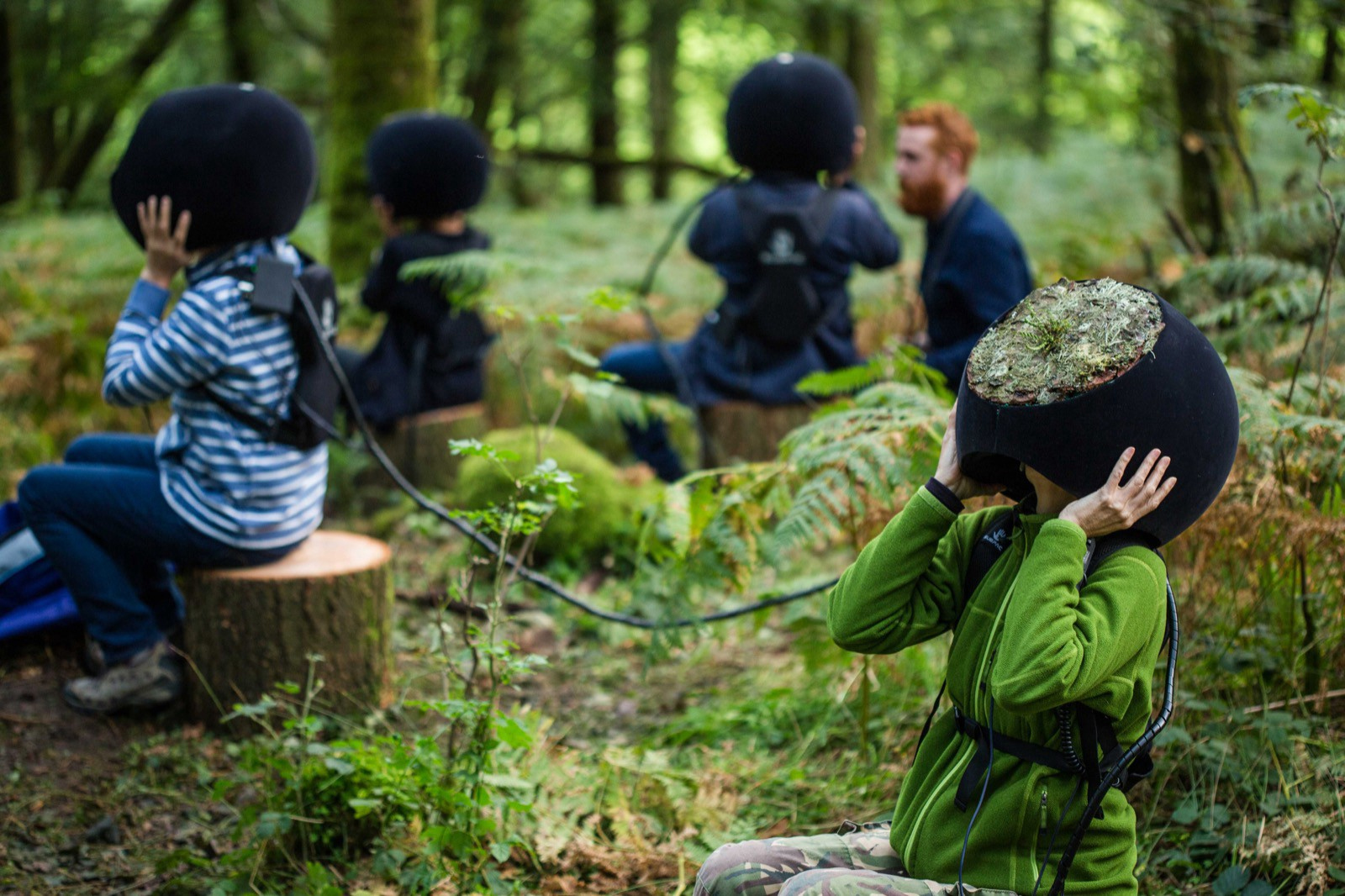
The use of VR would also enable the elderly population to better experience wildlife tourism from the comfort of their homes. There are already hugely successful companies and non-profit organisations promoting VR in nursing homes, allowing the elderly to travel back to places with cherished memories – for example, where they were married – or, perhaps, to grant them their final wishes of seeing the Northern Lights, or visiting the Eiffel Tower.
There is no doubt VR could also positively impact the illegal wildlife trade, as VR allows audiences to experience close encounters with animals without harm.
However, some people may continue the illegal wildlife trade, for a sense of ownership or as a source of income. These types of activities could be minimised through public education, and by finding better solutions to poverty in Third World countries that have hotspots of illegal wildlife trade.
In terms of educating the public, VR, combined with artists’ impressions, can even help members of the public to ‘feel just as an animal would’. This can also form a driving influence for AR and mixed reality (MR) presentations.
Cloning technologies disrupt wildlife trade
Another emerging tool that could help the future of wildlife tourism, and disrupt the illegal wildlife trade, is by cloning animals for tourism.
Cloning could support wildlife safaris and hunting for sport. Cloning could also support other leisure purposes, such as providing exotic foods for restaurant menus, while furthering conservation and education aims. Cloning domestic pets is already well practised across the globe, with owners willing to spend considerable amounts on bringing their favorite pets to life.
While cloning seems to be a good option for many scenarios in the future [Ethical and animal welfare issues aside – Editor], there remains a profitable market for authentic wildlife. It is likely that even with all this technology, illegal wildlife trafficking would only be minimised and potentially stopped through public education.
Wildlife tourism groups across the world continue their efforts in public education, with the majority promoting responsible tourism activities, sharing a general view toward biodiversity conservation and environmental balance.
One thing is for certain, there remains a vital need in the future for applications of odour profiling – such as eNose sensors – and elemental profiling as the most promising tools for wildlife conservation.
Modes of non-invasive odour profiling methods of wildlife detection
Wildlife Detector Dogs (WDD)
AN IMPORTANT and current method of wildlife detection is through the use of detector dogs. These dogs have historically have been trained to follow animal scent in hunting activities, or human scent in search and rescue events, scent discrimination linking criminals to crime scenes in police operations, and further to detect concealed items such as narcotics or explosives. 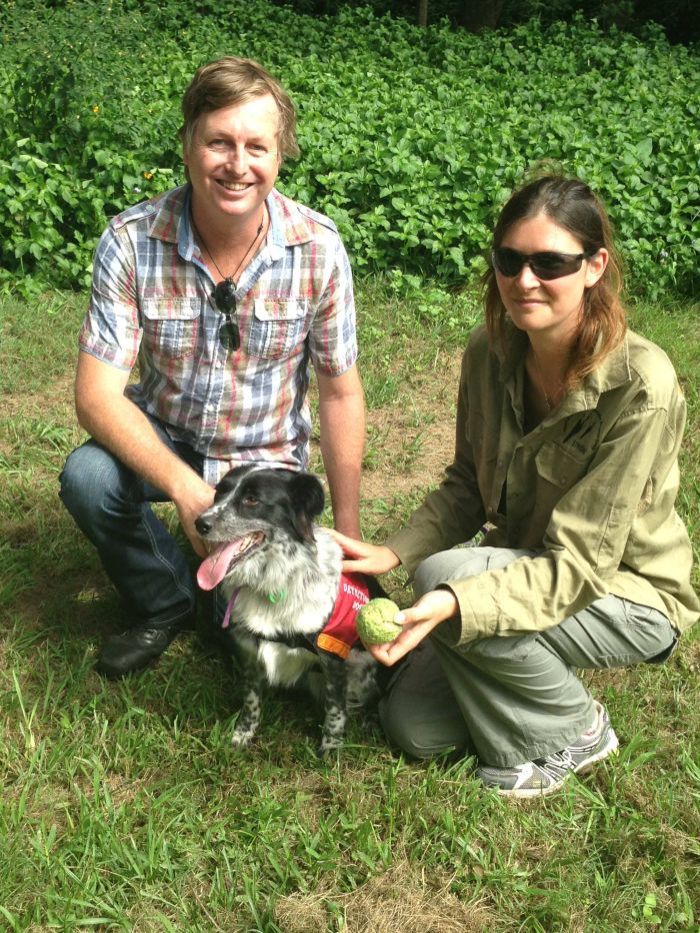
Specialist dogs are already deployed in many countries in a fight against general crime – such as drugs and explosives – to wildlife crime involving detecting wildlife, and/or their parts, to detection of snares and poachers, and for wildlife conservation programs.[1], [2]
Wildlife have specific odour linked to volatile organic compounds (VOCs), and detector dogs have an advantage due to highly sensitive olfactory receptors – they have a 10,000 to 100,000 times more acute sense of smell than humans – which enables them to detect low levels of VOCs at part-per-trillion (ppt) levels.[3]
Current research efforts are also aimed at identifying VOCs related to specific odours of wildlife and classifying to species and some common diseases.[4]
Wildlife detector dogs now commonly accompany law enforcement officials – such as customs officers and park rangers – across the world and a few examples of current advances and research are summarized here.
In terms of wildlife crime, the Australian Detector Dog Program6 has been at the forefront of detector dogs and celebrated its 50-year anniversary of WDD in 2019. It has managed a range of successful programs, with dogs trained to detect wildlife as well as narcotics and large quantities of cash at points of entry, such as airports, customs and mail facilities.
In 2013, the United States Fish and Wildlife Service, Office of Law Enforcement established WDD to detect wildlife product scents – such as elephant ivory, rhino horn, and snakeskin – within air cargo warehouses, ocean containers, international mail facilities, and border crossings. Some recent examples of WDD successes included an export cargo shipment from Miami containing CITES listed species live birds, and 50 pounds of CITES listed giant clam meat in Honolulu.[5]
Odour profiling methods can identify wildlife by species and individuals within species, and trained wildlife detector dogs are now routinely and successfully utilised by wildlife conservation groups to detect native species, such as the koalas[6] and northern quoll[7] in Australia, and across the world for invasive species of plants, animals and invertebrates, or diseases in feral animals.
As another example, Working Dogs for Conservation teams[8] have successfully been utilising detector dogs in law enforcement, biosecurity, or ecological monitoring of invasive species of plants and animal in the US. Detector dogs also continue to play a key role in biosecurity by early detection and mapping infestations during eradication processes.
Since 2011, the Detection Dogs for Conservation team at the University of the Sunshine Coast (USC) in Queensland has been developing koala detector dogs for conservation of koala habitats.[9]
Their experimental and field-based trials investigated the accuracy and efficiency of the first dog specifically trained for koala scats. The koala detector dogs consistently out-performed human-only teams with an off-leash detection rate of 100 percent, and were 19 times more efficient than current scat survey methods, accurately finding koala scats where the human-only team did not.
The USC team trained Bear, a famous koala rescue dog, found like others in a Royal Society for the Prevention of Cruelty to Animals (RSPCA) shelter by Gary Jackson Dog Training.[10]
Gary Jackson trained a black Labrador named Angus to sniff out red-eared slider turtles and their eggs, to help eradicate these pests from South East Queensland waterways. He later trained Sparky, for conservation work, and donated him to ecologist Amanda Hancock. She then trained Sparky and two other dogs, Kuna and Lily, to detect northern and spotted-tail quoll.
The northern quoll weighs less than a kilogram and is the smallest of the four Australian quoll species – marked by a long tail and white spots on its back – inhabiting the coastal ranges of Western Australia, Northern Territory and across to South East Queensland.[11] This critically endangered species make dens in bedrock hills, and Amanda Hancock has successfully implemented dog detectors for mapping their habitats for various collaborative projects, including with Wildlife Queensland and Bush Heritage Australia, a national non-profit organisation conserving biodiversity.9 The WDD were also deployed for Ratch Australia during construction of a 53-turbine wind farm on Mount Emerald[12], [13].
Future advances of wildlife detector dogs (WDD) and eNose sensors
Research in WDD is ongoing to standardise the search methods in order to optimise search effectiveness. For example, a recent field trial focused on identifying the probability of detection (POD) at various distances between the searcher and the search object.
The trial identified that dogs were ineffective at a distance of more than 10m from a source of rat odour when encountering a laboratory rat (Rattus norvegicus) or a Norway rat (wild-type R. norvegicus).[14] These findings will help in optimising the training of wildlife detector dogs.
Combining technology with detector dogs has resulted in a Remote Air Sampling for Canine Olfaction (RASCO) system,[15] which enables the fast screening of shipment containers.
The picture (right) shows a detector dog next to special equipment, which directs an air sample out of a suspected cargo container that is then passed through a filter and collects the scent for the dog to smell. 
An example of RASCO was tested with dogs trained to recognise the scent of ivory and rhino horn at Kenya’s Mombasa port, which is believed to be the global hub for the illegal ivory trade. Before RASCO, the Kenyan port was already using dogs to investigate containers, leading to 26 seizures in just six months.
Due to the high volume of containers (about 2000 per day), and the environmental working condition, the dogs often got hot and fatigued. The RASCO enables the dogs to smell the filters from climate-controlled rooms and examine a container’s scent within a few minutes.
It is worth noting that between 2009 and 2014, close to 40,000lb of ivory was seized at Mombasa, representing the killing of 2,400 elephants. This number does not account for the amount of ivory that was successfully smuggled out of the country.17
While detector dogs provide an excellent service with high accuracy detection of wildlife both in the field environment, as well as marine ports and airports, it is important to recognise their high training cost – estimated at about A$40,000 per dog.
Furthermore, detector dogs require handling by specially trained professionals, which also contributes to operational costs. Some of these costs could be minimised by the application of RASCO systems, although there remains a great need for advancement in new technologies such as eNose sensors.11
Electronic nose sensors – eNose
A detector dog or sniffer dog is specially trained to use its senses to detect specific scents, such as wildlife scat, illegal drugs, explosives, and currency.
The scents and odours that dogs detect with their noses are, in fact, small quantities of chemicals – for example, volatile organic compounds (VOCs) – and current technologies have enabled the development of a multi-sensor device known as electronic nose (eNose), which simulate the biological nose to detect the various chemicals that create a scent. 
Electronic nose sensors have been developed for a range of applications, including human and animal diagnostics, and environmental safety. The field of eNose technologies is expanding to non-invasively detect VOCs present in clinical samples for medical diagnoses, disease monitoring and prevention.
Electronic nose sensors have been used to detect different types of diseases in a wide diversity of animal species including tuberculosis (TB) in badgers and cattle,[16] white-nose syndrome (WNS) in bats,[17] and cutaneous myiasis (CM) in sheep.[18], [19]
Sensors that measure and indicate the concentration of certain gases in air via different techniques – such as infrared and electrochemical – are commonly utilised in both domestic and industrial industries. For example, sensors are used in welding shops to detect combustible and toxic gases.
Sensors for a range of chemicals are commercially available and, furthermore, sensors have now advanced to become very small – about the size of a small coin[20] – and are being used as core fitness wearable devices.
Similarly eNose devices have been developed and are advancing all the time. A good example is the sensor based on an explosives dog’s nose detection of the chemical profiling of target explosives.[21]
In fact, a group of researchers used microfluidic nanotechnology to mimic the biological nose of a dog.
The scent and odour produced by an organism, including plants and animals, derive from complex metabolic processes, which are unique signatures for identification of species. For wildlife tracing, traditionally, scat has been used because each type of scat is different, so it can be correlated to various animals.
Aside from physical differences, the scents associated with scats also differ due to the specific diets of each species. Thus by identifying the VOCs associated with species scats, a set of signature compounds could be correlated to specific species, as well as a set of compounds common to all types of animals. Therefore, a device equipped with a number of sensors could indicate the presence of animals as well as the species.
This device could be stationary, similar to the RASCO system – for example at airports or mail facilities – or the device could be carried out in the field by park rangers or wildlife researchers.
The studies of odour emissions from commercial industries, such as poultry[22] and pig[23] farms, conducted to understand odour abatement strategies, have generated a good database of compounds related to animal odour. These chemicals range from compounds with low odour threshold and distinct character – for example, the ‘rotten cabbage’ odour of methyl mercaptan – to some common chemicals with higher odour thresholds such as the vinegary odour of acetic acid). 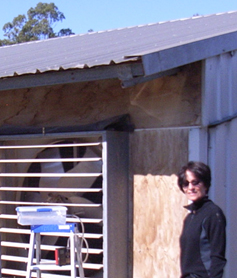
Sensors for a wide range of these chemicals are commercially available. It can be envisaged that wildlife odour would share some common chemicals, such as hydrogen sulfide and methyl mercaptan, and would as well contain some unique chemicals, which arise based on their specific diets.
For example, studies of koala scat have shown the presence of compounds related to eucalypts oil[24] due to their unique diet consisting of eucalypts leaf.
A multi-sensor eNose device is currently under development for general detection of wildlife based on the presence of some of the compounds presented in the table below.
Studies are also underway to select a set of odour identifier compounds that are unique to specific species, such as the Australian northern quolls or koalas, for both conservation and illegal trafficking purpose.
The aim is to incorporate eNose sensors at the airports or by park rangers, similar to wildlife detector dogs.
Can technology mimic and replace wildlife detector dogs?
WITH THE PACE of technological advancement, it is possible that electronic nose (eNose) sensors could soon replace wildlife detector dogs (WDD) in many situations.
Furthermore, eNose sensors could be mounted on electronic drones enabling 24/7 operation across harsh terrain and covering large, hard-to-reach areas, reporting the findings to a base station where a park ranger could monitor the drone’s operation and data collection.
With advancements in WDD and eNose sensors – and making these non-invasive odour detection methods more accessible – park rangers and port authorities including regional airports, train and bus stations would be better equipped to check and identify illegal wildlife in transit.
This form of rapid detection would be a strong deterrent to traffickers, and would enable the authorities to intercept the various forms of wildlife crimes earlier in their transit routes.
A rapid response to wildlife detection, made possible by WDD or eNose devices, would discourage traffickers and is necessary to minimise and potentially put an end to illegal wildlife trafficking.
On the other hand, the availability of WDD and eNose sensors would also make it easier for the poachers to detect and capture wildlife. A possible way to make it difficult for poachers to access these technologies is to enforce a form of licensing: dog trainers would be required to be certified and to also register all wildlife detector dogs with state and federal government authorities, and to keep a formal record of people going through WDD training.
Furthermore, the manufacturers of eNose sensors should be officially required to keep formal records and periodically report the sale of any devices to government authorities. These forms of record keeping would potentially discourage the wildlife traffickers.
In order to put such regulations into practice, government legislation would be required, which could take a considerable amount of time.
In the immediate future, the misuse of WDD and eNose sensors for illegal wildlife trafficking may be better stopped by increasing public education and raising awareness about the impact of wildlife in biodiversity conservation and the important role of wildlife in environmental balance.
Elemental profiling to correlate wildlife to geographical origins
Once the illegally transported wildlife has been rescued – those still alive – best-practice is to correlate the animal to its geographical origin, for safe return to its natural habitat.
This information is also required to identify the location of illegal wildlife crime, such as in identifying the routes of illegal ivory trade.
One approach is through the DNA analysis of body parts, but DNA analysis is both timely and expensive – and it further requires access to GenBank, an international database of genetic codes from thousands of species. Some recent advances include the application of paper-based biosensor technology, to reduce costs. This method is also accurate, specific and sensitive to DNA, and can be used to accurately determine the species from scats.[25] This paper-based method requires little training, and portable hand kits are being developed, which makes it easier to operate in remote areas.
Using this technology, local villagers could potentially aid with the identification and an accurate estimation of specific species, for example, snow leopard abundance. The problem with DNA based technologies remains, however, as the database for some taxa is incomplete and only about 10-20 percent of reptiles and 50 percent of birds are represented.
Therefore, there is a great need for emerging non-invasive tools to help identify geographical origins of species, which is achieved by the use of elemental profiling.
A review paper[26] by Keith Hobson in 1999 revealed the use of stable isotope analyses of 13C, 15N, 18O, 2H, 34S, and 87Sr to trace the nutritional origin and migration in animals. This method of elemental profiling is made on the basis that animals moving between distinct food chains store information of feeding locations for periods that depend on the elemental turnover rates for the tissue of interest. Keratinous tissues remain metabolically inert following synthesis, and thus maintain an isotopic record, which could reflect the location where the tissues were generated.
Elemental profiling is a validated method and is currently being used in the ivory market.
During 2010 to 2016, the Federal Agency for Nature Conservation (BfN) with a grant from the German Federal Ministry for the Environment, Nature Conservation, Building and Nuclear Safety (BMUB) conducted research into methods of determining the origin of elephant ivory.
This project[27] examined 714 ivory samples collected between 2009 and 2014 from 29 African and six Asian elephant range states from European museums and zoological collections, and also included samples from protected areas, provided by CITES management authorities.
These samples were analysed at Agroisolab Facility for Stable Isotope Research in Jülich, Germany by isotope ratio mass spectrometry, which measured five different stable isotopes (13C, 15N, 18O, 2H, 34S), and revealed elemental profiling of African elephant ivory works confidentially on regional scales.
Samples were collected at the most proximal end of tusks (pictured right), and ~1 to 4.5mg [approximately 1-4.5mg) were measured for the five different stable isotopes. It was possible to assign 50 percent of all samples within 381km, and 75 percent within 1,154km of their place of origin. 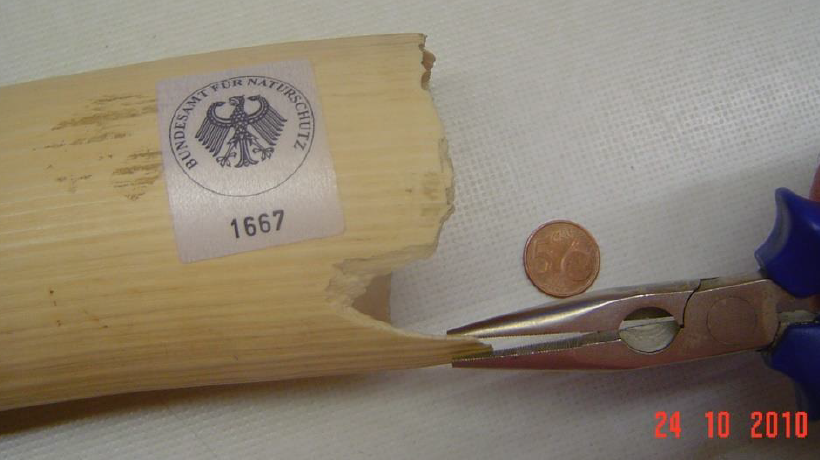
Further, a blind testing was also conducted, and revealed a detection probability of 98 percent for randomly selected tusks.
This research created an ivory database that is publically available (www.ivoryID.org). Development of similar databases is necessary for combatting the illegal trade in other wildlife areas, and elemental profiling is currently being applied to hair and feather samples of Australian wildlife.
Elemental profiling has further been validated to reconstruct the travel history of a transported horse by analyses of hair samples for oxygen (18O) and strontium (Sr).
Oxygen isotope ratios (18O values) of hair largely reflect features of regional hydrology, and strontium isotope ratios (87Sr/86Sr) reflect bedrock geology. Tracing isotope signatures of 18O and 87Sr/86Sr would enable determining provenance and reconstructing travel history of an organism. For this work, isotope profiles for oxygen and strontium along single hair strands, from domestic horses with known residency histories, were examined for about two years.[28]
Two healthy adult male horses were selected. The control horse (CH) was a local resident of Salt Lake Valley in Utah, USA, and the transported horse (TH) was relocated from Araçoiaba da Serra, Brazil (BR) in July 2006.
Two tail hair strands of ~400mm in length were obtained from each horse and subject to elemental profiling, one strand for 18O and the other for 87Sr/86Sr. The hair strands were washed with a 2:1 solution of chloroform and methanol to remove lipids and surface contaminants, and then cut to ~5mm segments, representing about one week of growth.
For 18O, isotope ratio mass spectrometry (IRMS) was used, and the analyses of strontium required acid digestion and chromatographic purification, followed by high-resolution multi-collector inductively coupled plasma mass spectrometry (MC-ICP-MS).
The changes in 18O and 87Sr/86Sr [shown in Figure 6] reveal a dramatic change occurring around the time of transport (in this case, the second quarter of 2006).
This study supports elemental profiling as a viable method of tracing the time of transport of animals, and could be well applied to illegal wildlife trafficking.
This approach is non-invasive as keratinous samples, such as hairs and feathers are used. However, elemental profiling requires access to well-equipped analytical facilities.
VR tech emerges in wildlife tourism
Virtual Reality (VR) is a hot topic in the wildlife tourism industry as it opens up thrilling experiences to people across the world without harming animals.3, 4
The natural world is full of exciting and awe-inspiring creatures and wonders, and VR is the medium that brings the natural world to within a finger touch of people.
Imagine experiencing walking though the vast Amazon forest and being able to hear the bewildering array of wildlife, watching monkeys hanging on trees, jaguars getting ready to hunt … and all of these without harming nature and animals.
Imagine being able to feel vibration, much as an animal does. These are the types of VR experiences made possible today through augmented reality (AR) and mixed reality (MR) systems.
By combining remote sensing technology and digital graphic design, a type of VR headset [Figure 7] has been created that enables the audience to see the world through the eyes of different creatures.
So now it could be possible to float like a butterfly, sting like a bee, and truly be transported into the minds of animals.6
VR could be developed to include a wide range of wildlife experiences – such as a white shark hunting for food in the deep ocean, or an eagle flying to a nest on a cliff – experiences thrilling for young and old alike.
Furthermore, this type of technology could be adapted to give humans an experience that includes the pain and suffering of animals under stress when placed in captivity, or when animals get declawed, so that the general public could in some way experience that trauma.
Such VR experiences would be very helpful in public education about how to treat wildlife. Also, these VR activities would generate good income for the tourism industry without harming the wildlife. VR should play an expanding role in the future of wildlife tourism.
Wildlife cloning for tourism
Another futuristic approach is the proposed cloning animals for tourism.7, [29] Animal cloning is becoming common – and even cloning extinct species could be a reality in the near future.
For example in 2000, the San Diego Zoo housed a banteng – a wild cattle species from South East Asia – cloned successfully from a frozen skin sample. The banteng clone lived for seven years.
Although, in general, the mortality rate of cloned animals is high, the research shows that most longevity problems are likely due to genetic errors.
Other cloning projects focus on de-extinction, which is extremely challenging.
In terms of wildlife tourism, cloning would provide access to rare wildlife, such as a snow leopard or a black rhino in a conservation park, for game hunters and safaris. These types of activities would generate good income for the industry, although a good majority of people would question issues of animal suffering.
Also, cloning could satisfy some groups wanting rare animals to taste as food, without breaking the law.
These scenarios may seem, to some, like nightmares, but it could be argued that the availability of cloned animals would minimise the hunt of wildlife species, which may be a good outcome in terms of environmental conservation.
A majority of humans are meat eaters, and many hunt animals for recreation.
Cloning animals could potentially satisfy this market, with good monetary profits, potentially protecting wildlife in the process.
REFERENCES:
[1] Australian Customs Detector Dog Program https://en.wikipedia.org/wiki/Australian_Customs_Detector_Dog_Program (accessed September 2019).
[2] Canine Program. https://www.cbp.gov/border-security/canine-program/center-history (accessed September 2019).
[3] Angle, C., Waggoner, L.P., Ferrando, A, Haney, P., and Passler T. (2016) Canine detection of the volatilome: A review of implications for pathogen and disease detection. Frontiers in Veterinary Science, 3, 47; https://www.ncbi.nlm.nih.gov/pmc/articles/PMC4919317/
[4] Wilson, A.D. (2018) Applications of electronic-nose technologies for noninvasive early detection of plant, animal and human diseases, Chemosensors, 6, 45; doi:10.3390/chemosensors6040045
[5] Wildlife Detector Dogs at Work. //medium.com/@USFWS/wildlife-detector-dogs-at-work-dd84c7ae394b">https://medium.com/@USFWS/wildlife-detector-dogs-at-work-dd84c7ae394b> (accessed September 2019).
[6] Cristescu, R.H, Foley, E., Markula, A., Jackson, G., Jones, D., and Fre`re, C. (2014) Accuracy and efficiency of detection dogs: a powerful new tool for koala conservation and management, Nature Scientific Reports 5: 8349, DOI: 10.1038/srep08349.
[7] Hancock A. (2014) The scent of a quoll, Bush Heritage Australia, https://www.bushheritage.org.au/newsletters/2014/summer/scent-of-a-quoll (accessed September 2019).
[8] Working Dogs for Conservation. https://wd4c.org/about-us (accessed September 2019).
[9] Koala Detection Dog. http://www.wildhelpers.com/koala-detection-dog.html (accessed September 2019).
[10] Koala detection dog Maya with her trainer and owner. https://www.abc.net.au/news/2014-04-15/maya-with-trainer-gary-jackson-and-owner-romane-cristescu/5392402 (accessed September 2019).
[11] Menkhorst, P, Knight F. A field Guide to the Mammals of Australia Oxford University Press South Melbourne, 2001, p.48 ISBN 0-19-550870-X - https://en.wikipedia.org/wiki/Northern_quoll
[12] Amanda Hancock and her sniffer dogs. https://www.abc.net.au/news/2018-03-17/amanda-hancock-and-her-sniffer-dogs/9528480 (accessed September 2019).
[13] Hancock A. (2018) Canine Scent Science in Australia – “Conservation’s Best Friend Too!” Wildlife Tourism Australia Conference, Launceston, TAS, Australia.
[14] Glen, A.S, Russell, J.C, Veltman, C.J., and Fewster, R.M. (2018) I smell a rat! Estimating effective sweep width for searches using wildlife-detector dogs, Wildlife Research, A-C, https://doi.org/10.1071/WR18021
[15] Smithsonian (28 august 2018), Sniffer Dogs Represent the Latest Weapon in the Fight Against the Illegal Ivory Trade, https://www.smithsonianmag.com/smart-news/sniffer-dogs-and-new-technology-team-save-elephants-180970143/ (accessed September 2019).
[16] Fend, R., Geddes, R., Lesellier, S., Vordermeier, H.-M., Corner, L.A.L., Gormley, E., Costello, E., Hewinson, R.G., Marlin, D.J., Woodman, A.C., et al. (2005) Use of an electronic nose to diagnose Mycobacterium bovis infection in badgers and cattle. J. Clinical Microbiology, 43, 1745–1751.
[17] Wlodzimirow, K.A., Abu-Hanna, A., Schultz, M.J., Maas, M.A., Bos, L.D., Sterk, P.J., Knobel, H.H., Soers, R.J., Chamuleau, R.A. (2014) Exhaled breath analysis with electronic nose technology for detection of acute liver failure in rats. Biosensors Bioelectronics, 53, 129–134.
[18] Wilson, A.D., Forse, L.B. (2017) Discrimination between Pseudogymnoascus destructans, other dermatophytes of cave-dwelling bats, and related innocuous keratinophilic fungi based on electronic-nose/GC signatures of VOC-metabolites produced in culture. In Proceedings of the VIII International Conference on Sensor Device Technologies and Applications, (Rome, Italy, 10–14 September) International Academy, Research, and Industry Association (IARIA): Wilmington, DE, USA, pp. 5–11.
[19] Cramp, A.P., Sohn, J.H., James, P.J. (2009) Detection of cutaneous myiasis in sheep using an ‘electronic nose’. Veterinary. Parasitology, 166, 293–298.
[20] Tiny breath acetone sensor to measure fat burning during exercise, help monitor diabetes (2017) https://www.medgadget.com/2017/10/tiny-breath-acetone-sensor-measure-fat-burning-exercise-help-monitor-diabetes.html (accessed September 2019).
[21] Detecting explosives with an artificial dog nose. https://www.zmescience.com/science/chemistry/artificial-explosive-detector-based-on-dog-nose-42343/ (accessed September 2019).
[22] Brown G., Atzeni M., and Maleknia S., and Mayer D. (2017) Addressing odour abatement and assessment knowledge gaps using PTR-ToFMS, AgriFutures Australia Publication No 17. https://www.agrifutures.com.au/wp-content/uploads/2018/12/18-078.pdf (accessed September 2019).
[23] Feilberg, A., Bildsoe, P., and Nyord, R. (2015) Application of PTR-MS for Measuring Odorant Emissions from Soil Application of Manure Slurry. Sensors, 15,1148-1167.
[24] Maleknia SD, Bell TL, Adams MA, (2009) Eucalypt smoke and wildfires: Temperature dependent emissions of biogenic volatile organic compounds, International Journal of Mass Spectrometry 279, 126-133.
[25] Chang, D., Tram, K., Li, B., Feng, Q., Shen, Z., Lee, C.H., Salema, B.J., and Li, Y. (2017) Detection of DNA amplicons of polymerase chain reaction using litmus test. Nature Scientific Reports, 7, 3110. https://www.ncbi.nlm.nih.gov/pmc/articles/PMC5465217/
[26] Hobson, KA. (1999) Tracing origins and migration of wildlife using stable isotopes: a review. Oecologia, 120, 314-326.
[27] Ziegler, S. (2017) Determination of Age and Geographical Origin of African Elephant Ivory. Project duration: 01 July 2010 – 31 Dec, 2016. https://ivoryid.org/Final_Report_BfN_Ivory.pdf (accessed September 2019),
[28] Chau, T.H., Tipple, B.J., Hu, L., Fernandez, D.P., Cerling, T.E., Ehleringer, J.R., Chesson, L.A. (2017) Reconstruction of travel history using 18O and 87Sr/86Sr measurements of hair, Rapid Communications in Mass Spectrometry, 31, 583-589.
[29] Mackenzie Wright, D.W. (2017) Cloning animals for tourism in the year 2070. Futures, http://dx.doi.org/10.1016/j.futures.2017.10.002
Table 1: Partial list of compounds correlated to odour character and threshold as identified from poultry farm emissions (adapted from reference 24).
|
Molecular mass |
Likely compounds |
Odour character |
Odour threshold (min) (ppb) |
||
|
44.026 |
Acetaldehyde |
Fruity |
1.5 |
||
|
48.003 |
Methyl mercaptan |
Rotten cabbage |
0.02 |
||
|
59.037 |
Acetamide |
Mousey |
2.83 |
||
|
59.073 |
Trimethylamine |
Fishy |
0.44 |
||
|
60.021 |
Acetic acid |
Vinegary |
363 |
||
|
86.036 |
2,3-Butanedione |
Buttery, rancid, fat |
0.05 |
||
|
88.052 |
Butanoic acid / Ethylacetate / Isobutyric acid |
Mushroom, rancid, cheesy |
0.19 - 1.5 |
||
|
90.050 |
Diethyl sulfide |
Rotten |
0.033 |
||
|
93.991 |
Dimethyldisulfide |
Pungent, garlic |
0.3 |
||
|
108.056 |
P-Cresol |
Faecal, tarry |
0.054 |
||
|
131.075 |
Skatole |
Faecal |
0.006 |
||
|
|
ends

